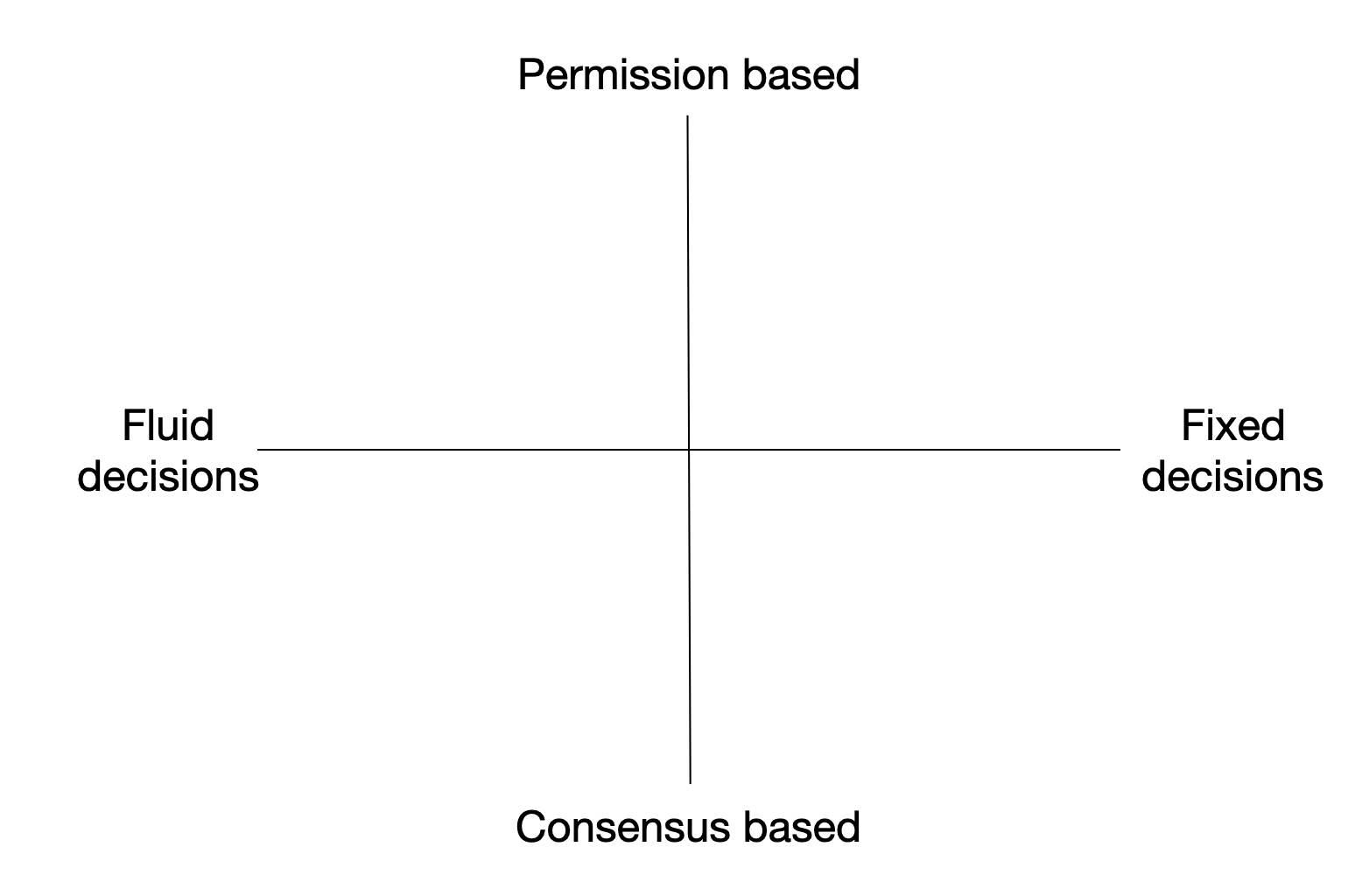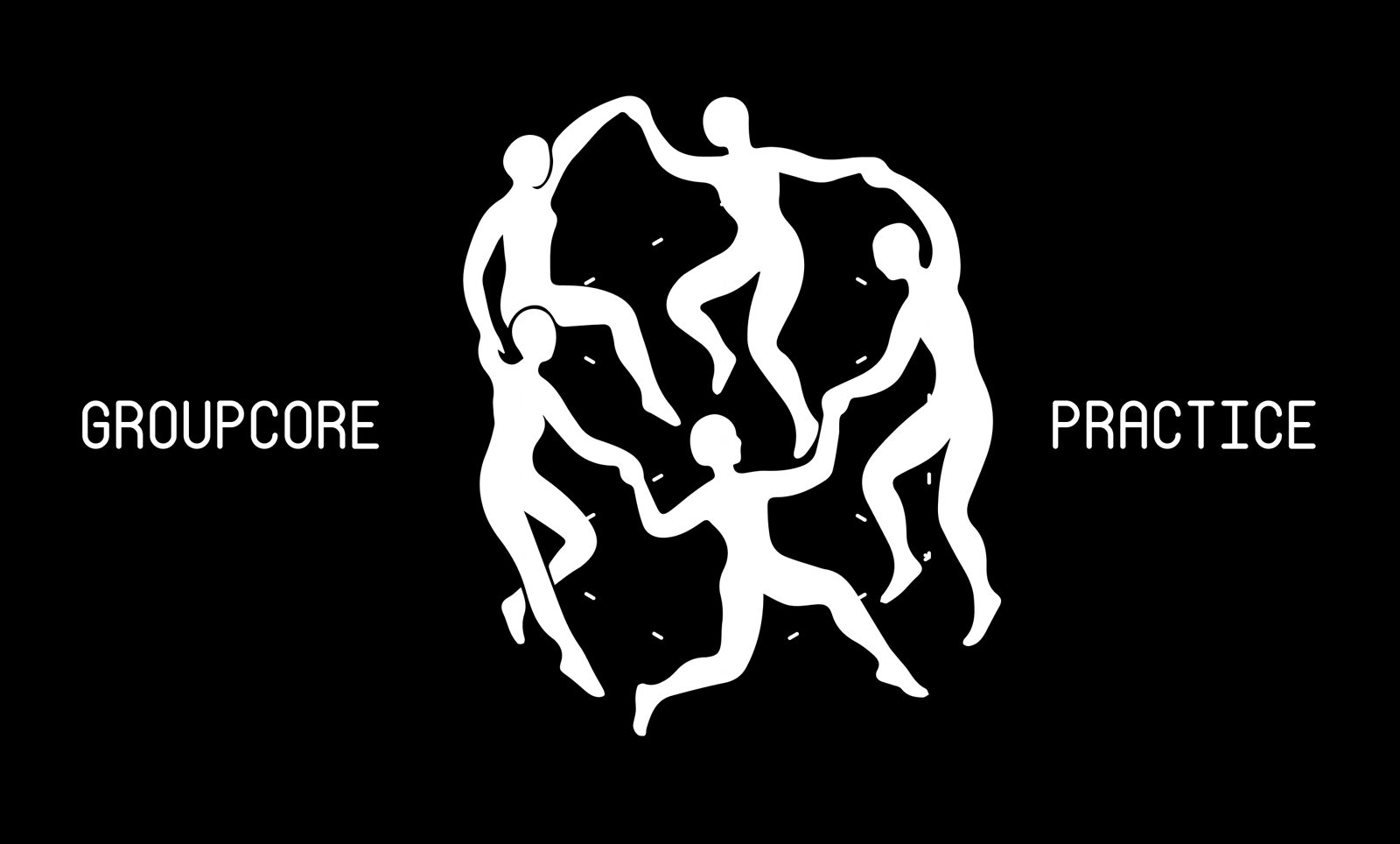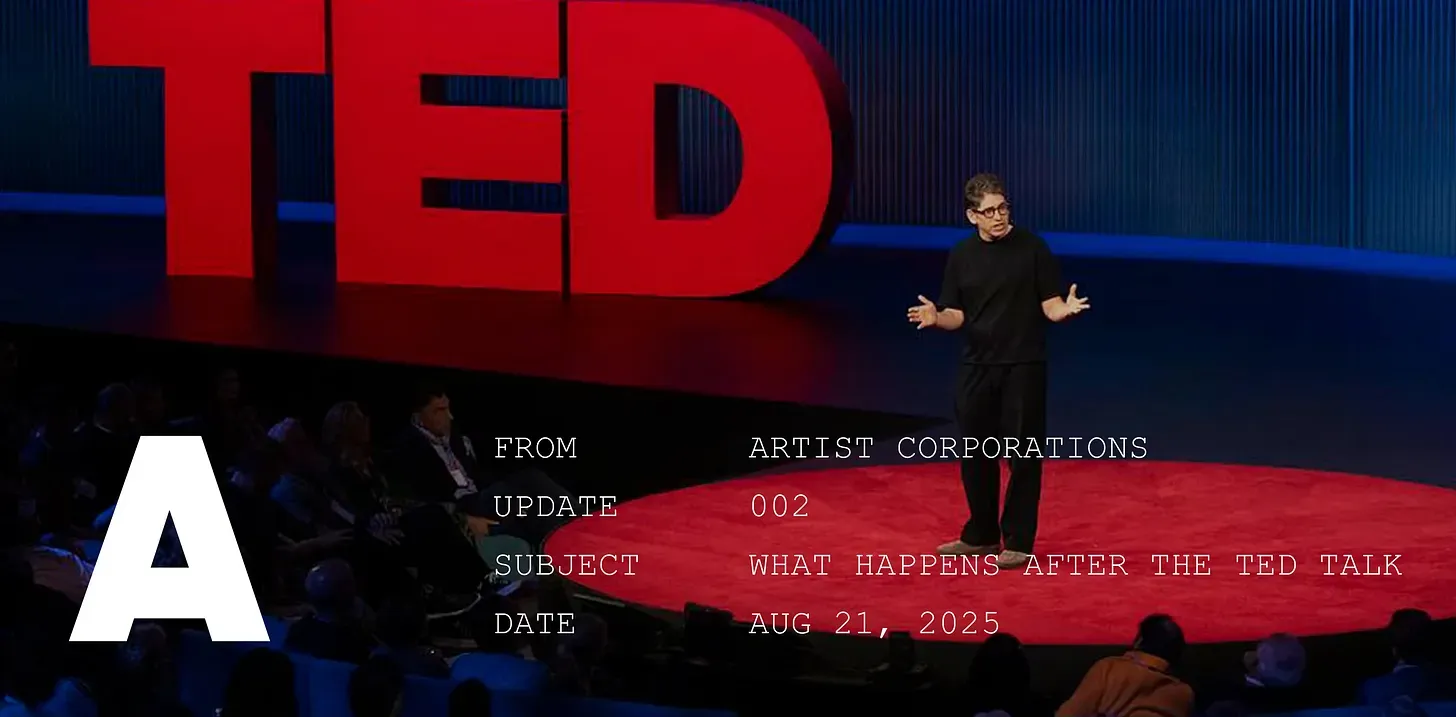A theory of groupcore

Metalabel exists to make groupcore: software, tools, ideas, and spaces that help people cooperate.
But can one groupcore as a verb? How do you do it? How is it similar to other forms of coordination we already know?
This post explores groupcore and its underlying principles. In a follow-up post, we look at groupcore in practice with a case study on how Metalabel works.
What groupcore is
Groupcore is a term we're using to describe the loose, rotating circles of collaboration and work that the internet makes possible. To groupcore means being part of multiple collaborative spaces (IRL and online) where you make things with other people. Some of these things pay money. Some don't. Together they create a basis for doing things with other people; financially supporting yourself; and manifesting parts of who you are.

Groupcore is an underlying mode like open source or co-ops that any person can participate in. Groupcore happens when individuals seek a form of cooperation that gives them autonomy, distributes authorship, and generates new outcomes none could make on their own.
Groupcore is a pattern of coordinated action that mixes collective achievement, personal growth, and meaningful work. Groupcore resembles a post-industrial guild, a scene, a metalabel, or people-controlled DAOs. A horizontal network that overlaps in some key way (skill, interest, location, mutual friends or enemies) whose efforts may alternately compete, conflict, or collaborate depending on the project and moment.
The physics of the groupcore approach produce two other common traits:
Groupcore is fractal. Each level and phase of a groupcore effort is a reflection of its larger self. The roles within a groupcore project reflect the group’s norms and vibes (positive and negative). Subgroups inherit the meta-logic of the overall work. The creative process reproduces similar patterns at different scales. It’s groupcore all the way down.
Groupcore is anti-fragile. Groupcore practices do not rely on a single product or source of income. This diversified structure makes them inherently anti-fragile. It encourages a high turnover of small ideas with distributed authorship and low fixed costs. The failure of one project is unlikely to threaten the network. This resilience compounds, as groupcore work tends to strengthen as it survives conflict and meaningful toil, producing emergent slack and opportunities to integrate learnings as it evolves.
What groupcore is not
Groupcore is not the same as organizational and work-driven structures we’re used to.
- Poly not mono. Traditional orgs have fixed borders that establish authority and direction. Groupcore orgs are nodes that simultaneously participate in many different projects and configurations, both intra-group and inter-group. Cross-pollination of ideas and techniques between groups is a core feature.
- Lattices not skyscrapers. Groupcore projects are interlinked and networked more than hierarchical. Their growth is not meant to produce towering edifices so much as durable and broadly integrated structures. Groupcore influence is more lateral than vertical and reflective of the post-web world.
- Fluid not fixed. Groupcore projects focus on a specific vibe or outcome while maintaining a sustained fluidity in how they get there. Plans to make a project can easily evolve into work on the underlying infrastructure, side components, or last-mile applications. Unlike a job, groupcore is not something or someone you “work for” but a conscious path of open-ended labor.
How to groupcore (basics + stack)
For any groupcore practice to become realized, a few key elements are needed:
- Purpose. To properly groupcore, there must be a shared interest or goal. What does this group exist to do? Is it a feeling? An outcome? An escape?
- People. Who do you make things with? What do you all do? What skills does each person bring to the group?
- Responsibilities. What does it mean to be part of your group? How can people contribute? What are they here to do?
- Outcomes. What’s meant to happen as a result of coming together? Are the goals financial, impact, or something else?
If you have these, you have the start of a groupcore practice. To activate these basics, a few shared tools are needed:
- Shared intentions and language. Agreement and language are key tools for any groupcore endeavor. The group needs a shared way of communicating (which will differentiate from outside vocabulary over time) and some shared ideal that lets them act without being bribed, coerced, or managed into it.
- Shared communication spaces. Most activity happens in shared communication environments, usually a group chat, with occasional voice or video calls and IRL gatherings. This space produces the raw material of ideas and seeds of future actions.
- Shared brain. The shared communication channels generate collective knowledge and understanding, recorded and inscribed in the group’s shared brain — perhaps a mutually accessible folder, single master document, or something more or less formal.
- Shared resources. The group must be supported by a set of shared resources, like audience, money, reputation, ability to infiltrate or influence desired parties, and so on.
Groupcore decision making
With these shared social and technical tools, a groupcore project will begin to operate according to its nature. These ideals tend to be defined in theory and realized in practice across a few key axes:

- Decisions. How are decisions made? Does everyone get a chance to weigh in or only specific people?
- Proposals. Do you need to propose or can you just do things? Is everyone allowed to propose something?
- Consent and dissent. Is everyone expected to agree with everything that goes on? What happens if they don’t?
- Norms. Is the internal structure and process of the group fixed and defined by preset rules, or is it fluid and something that changes based on new experiences?
Groupcore can take many forms, from intentional democracies and co-ops to anarchic free-for-alls and Dark Forest conspiracies. Each has a light side (mutual support, shared power, collective action) and a shadow side (bureaucracy, ego-trips, cult dynamics). The same tools that make a group resilient can also make it insular or coercive. The difference is in how power, attention, and care are handled.
As an example we’ll return to, Metalabel operates as a heterarchy: different people hold final decision-making power in different domains. The follow-up essay explores how this actually works day to day.
A groupcore future
We’re deeply inspired by the idea of the Hacienda from an early Situationist manifesto. The Hacienda is the place where all the right people are having all the right conversations and life remains alive. But it's a place that does not exist. It cannot exist as a place of permanence. It's a place that must be built, and that anyone can manifest at any given moment.
Groupcore is less an end-state than a state of being. Groupcore does not seek to dominate competition or extract excess labor. The goal of groupcore is to open the space of divine connection that exists between us, and to keep it open long enough for new ways, new selves, and new value to grow.
Next: Groupcore in practice, with a Metalabel case study
Thanks to the Dark Forest Tech groupchat and the Dark Forest Collective for questions and feedback on this essay.





Member discussion